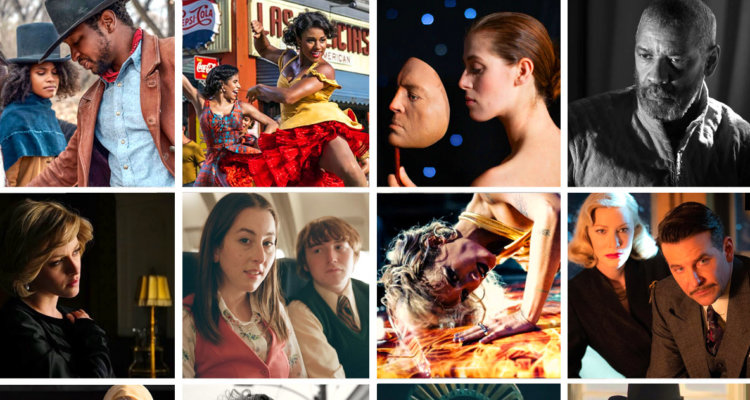“Censor”
Recreating a period without giving the appearance of faking it is a delicate task. That chore is mostly the production design team’s responsibility. The rest comes down to the DP. Annika Summerson, Prano Bailey-Bond’s eyes on her knockout horror film “Censor,” looks back at the past coolly, with a clear sense of time and place, fully aware that it’s her job to evoke the past without stepping over the line where the audience suspends their disbelief. It’s also her job to hold Bailey-Bond’s viewers in the perspective of her protagonist, Enid (Niamh Algar), a state censor in Margaret Thatcher’s England, who watches one gory movie on the job and loses her marbles over the lead actress, who looks suspiciously like her long-lost sister. “Censor” is all about Enid’s POV, right down to the final minutes, where the aspect ratio shrinks from 2.39:1 to 4:3. That shift isn’t Summerson’s handiwork. It’s a post-production flourish. But Summerson has to block and shoot these scenes for 4:3, which is a tricky feat of its own. Bravo to her for pulling it off. – AC
“Zola”
One thing can be said about Janicza Bravo: She never met an awkward, soul-crushing punchline she didn’t like. One other thing can be said about Bravo, which is that she absolutely loves a wide shot. For “Zola,” her sophomore follow-up to her 2017 feature debut “Lemon,” DP Ari Wegner throws out wides left and right, giving the movie the sensibility and visual structure of a stage play. This makes sense coming from Bravo – she does have a strong theater background – and has the greater benefit of divorcing “Zola” from its source material, being the Homeric 2015 Twitter thread by Aziah King about the nutty white lady who convinces her to go on a road trip from Detroit to Tampa, where all their best-laid stripping plans go wrong. (They go wrong because the nutty white lady, apart from nutty, is a terrible, manipulative person with terrible designs on Aziah.) Wegner’s job is to move as far away from social media as possible; her use of a garish, hyper-stylized aesthetic, of a piece with other Florida-based, batshit, black comedy, crime movies, makes that a job well done. – AC
“The Tragedy of Macbeth”
There is a high order to the darkness and light flickering from every flawless frame of Joel Coen‘s “The Tragedy of Macbeth.” Teaming again with French DP Bruno Delbonnel (in place of usual collaborator Roger Deakins) ‘Macbeth’s’ high contrast, black and white photography, somehow manages to seamlessly mesh nihilistic, German Expressionism style imagery (a la Fritz Lang) with compact theatrical staging, placing the audience in the center of the sets. You feel as if you’re inside the nucleus of Shakespeare’s soothsaying portend, eyes popping out of your sockets, so that they may join the witches’ blend. Typically known for filling frames with soft colors bleeding natural light temperature, Delbonell’s ubiquitous use of exposure and lenses has perhaps never looked better than when stripped away of saturation. Bookended by a pair of transitions that will no doubt be studied in cinematography courses, between the climactic duel atop the castle bailey, drenched in corporeal fog, and Denzel Washington’s lunacy-laden dagger monologue, pacing down a corridor, shadows are wielded as a weapon in Joel Coen’s chilling Shakespeare adaptation. – Andrew Bundy
“Licorice Pizza”
Perhaps today’s most consistent dialog regarding San Fernando Valley auteur Paul Thomas Anderson; the evolution of visual language across his time hole filmography. Once driven by a whip-pan, Scorsese-like, coked-up, infection/affection paired with tribal immersion via Altman-esque ensembles, PTA’s lens work and staging set-ups now ever further resemble the ‘70s New Hollywood vibe Altman pioneered, “Licorice Pizza” pulling a shot or two straight from his sunny-soaked noir, “The Long Goodbye” (obviously a heavy influence on “Inherent Vice” as well). The ongoing pile-up of shaggy, sometimes frenetic, but always controlled compositions, echo the ongoing, juvenile scheming of Gary Valentine (Cooper Hoffman) and Alana Kane’s (Alana Haim) bizarre celebrity encounters and alternative mishaps. In many ways, it’s the closest he’s come to making a picture like “Nashville” (the ominous #12 character outside Joel Wach’s political headquarters lingering like the psychological dread coming for our post-Vietnam nation). Sharing DP credit with Michael Bauman, “Licorice Pizza” is the first movie PTA’s shot in the scope format utilizing his current penchant for long lenses and compact framing. Much like “Phantom Thread,” or “The Master,” the photography transports you back into another realm entirely. – Andrew Bundy
“The Power of the Dog”
Further evidence that New Zealand’s boundless terrain can double for just about anywhere with the right eyes behind the camera, Jane Campion’s psychological pseudo-Western, “The Power of the Dog” taps into the abundant isolation of living in the bountiful shade of a Montana mountain range, seething macho oppression of the mighty working man wearing a weary mask sheathing cruel, personal resentment and intimate denial. Paired together with Jonny Greenwood’s tormented score—understandably ushering in “There Will Be Blood” comparisons, in keeping with both films’ houndishly aggressive interpersonal exchanges—Campion has yet to make a historic piece that doesn’t feel tangibly complete, DP Ari Wegner’s astounding and sinister, formalist photography both menacing and meddlesome. Building to a deceptively intimate transference of power via a series of herding close-shots, the film’s final staging set-up is so palpably perturbing you’ll be glued to your seat, staring at the blank credit screen as though you’ve been caught in a hunting trap. – AB

